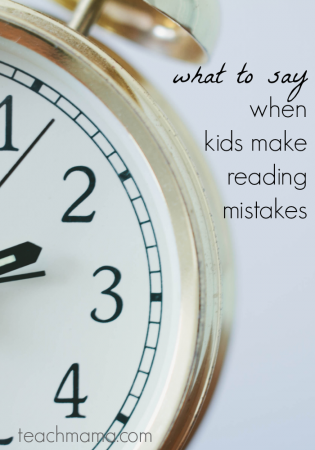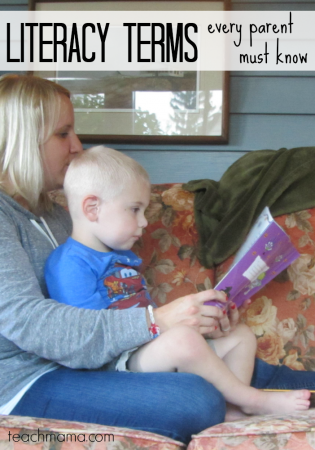Okay, so you’re all into reading aloud with your kids, right?
You’ve got a great bunch of books to read, but your child insists on reading one that’s a notch (or two or three!) above her reading level?
It happens more often than not, so don’t be alarmed.

If your child’s friends are all reading Harry Potter and she’s still at the Cam Jansen or Amelia Bedilia stage? She’s going to want to read what her buddies are reading.
And that’s okay. There’s nothing wrong with striving high and reaching far.
But it means that she’ll need a bit more support than she wants to admit.
So if your child wants to work through a difficult text, you need to establish some SOSS rules.
SOSS stands for:
- State the facts
- offer an Opt out
- create a Signal
- Shake on it
You need to be clear about the reading situation so that the child doesn’t reach a frustration level early on; or, if she does become frustrated, you need a plan.
Because friends, most likely at some point she’ll be frustrated through the text if it’s not at her working, instructional level.
Here’s the thing to always, always remember: reading aloud, at home with parents, should be easy and fun. It should be low-stress and enjoyable. Bottom line.
Reading. Should. Be. Fun.
There are some ways to work through a difficult text together if you, as the parent, aren’t going to do the reading yourself—if your child wants to do the reading.
Here’s the skinny. . .
How To Support Your Child Through Difficult Texts
1. state the facts
Say, Okay, this is a little more difficult text than we’re used to, so that means a few things: 1. It means we’re going to run into words we don’t know how to pronounce or words we don’t know. 2. It also means that we may run into ideas we don’t understand.
2. offer an opt out
Say something along these lines:
Knowing that this is a tougher text, you now have a choice: do you want to find a new book, one that’s less challenging, or do you want to work together through this one? You decide.
3. make a signal
If the decision is to drop the book and find another, find another best fit book.
If the decision is to stick with it, say something like:
Cool. We’re sticking with this book, so we need an SOS signal to use whenever we hit a word we don’t know how to pronounce or know the meaning. The SOS signal can be a snap, a clap, a raised arm, a whistle, a hoot, a holler, a whisper, a ‘Help!’, a shimmy shake—anything.
It just has to be easy to do, and you have to be comfortable doing it whenever you need a hand.
Once the signal is decided upon, make sure that the signal is used and that you follow up with: Do you want the word or want me to take over the reading? Either way works for me!
4. shake or slap on it
Like any big business transaction, to seal the deal, you need to shake on it.
But in this case, you can slap five, too. Either way works.
Just make it clear that everyone understands how to proceed. That way, there will be no hard feelings, no upset, and (hopefully) no frustration.
Friends, it’s just about letting kids know that as parents, we’re here to help them. And that it’s okay to ask for help.
And that we’re not judging them or grading them while they read—we’re supporting them.
Cheers, and happy reading during this incredibly exciting journey!






Leave a Reply